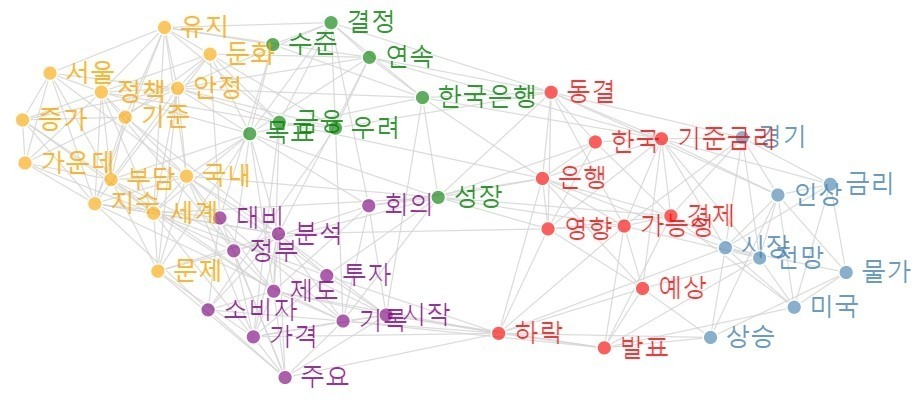[해외 DS] 뉴스 제작 효율성 높인 AI 저널리즘, 완전 자동화는 아직 시기상조
로봇 저널리즘, 보조 도구인가 대체 도구인가 완전히 대체하기에는 사람과 맥락에 대한 이해 부족해 AI와 저널리즘의 상생, 투명하고 책임감 있는 기술 도입 필요
[해외DS]는 해외 유수의 데이터 사이언스 전문지들에서 전하는 업계 전문가들의 의견을 담았습니다. 저희 데이터 사이언스 경영 연구소 (MDSA R&D)에서 영어 원문 공개 조건으로 콘텐츠 제휴가 진행 중입니다.

자동화된 저널리즘은 지난 10여 년 동안 사용됐지만, 레거시 미디어 플랫폼에서 적극적으로 사용되지는 않았다. 하지만 최근 ChatGPT와 같은 도구의 등장으로 생성 도구의 접근성이 좋아져 AI 도구들이 크고 작은 형태로 뉴스룸에 침투하고 있다.
보조 도구로서의 AI
저널리즘에 AI를 적용할 수 있는 사용 사례로 헤드라인 자동 생성을 꼽을 수 있다. 텍스트 상자에 ‘벤처 투자에 관한 머리기사를 생성해 주세요’와 같이 원하는 내용을 입력하기만 하면 당장 사용해도 무방한 헤드라인 예시 리스트를 뽑아준다.
조금 더 세분화된 프롬프트를 작성하거나 ChatGPT의 커스텀 인스트럭션 기능을 사용하면 특정 뉴스룸의 스타일에 맞게 구체화한 결과물을 얻을 수 있다. Anthropic의 Claude 챗봇 애플리케이션은 사용자가 참고 문서를 업로드하면 해당 글의 맥락을 분석해서 알맞은 답변을 제공한다. 기자들은 Grammarly와 같은 AI 도구를 사용하여 맞춤법을 검사하고 Otter.ai를 사용하여 음성을 텍스트로 변환하는데 활용하고 있다. 이렇듯 사용법이 간단하고, 활용도가 높은 AI 제품들로 사용자의 편의가 크게 향상되고 양질의 콘텐츠를 더 빠르고 똑똑하게 제작할 수 있게 됐다. 더 나아가 저널리즘에서 AI의 적용 범위는 머리기사 작성뿐만 아니라 동영상 편집, 웹 제작, 디자인 테마 생성 등 뉴스 제작 과정 전반에 걸쳐 있다.
완전 자동화는 아직 주의해야
헤드라인 아이디어를 개선하거나 인터뷰 대화 주제를 생성하는 데 AI를 사용할 수 있지만, 아직 오피니언 뉴스 생성에는 분명한 한계점을 보였다. 아일랜드의 지역 뉴스 매체인 Limerick Leader는 ChatGPT를 사용하여 민감한 주제인 이민에 관한 오피니언 기사를 생성한 적이 있다. 헤드라인은 다음과 같았다 ‘아일랜드의 난민들은 집으로 돌아가야 할까요?’. 생성된 기사는 나중에 편집되어 ‘실험 단계’로 분류되었고, 제목은 다음과 같이 바뀌었다 ‘인공지능을 신뢰할 수 있을까?’.
해당 기사는 전국언론인연합회(NUJ)에서 “심각한 우려”를 표명하는 등 큰 파장을 일으켰다. NUJ 아일랜드 비서인 세아머스 둘리(Séamus Dooley)는 다음과 같이 AI의 기사의 문제점들을 꼬집었다. “이런 기사를 쓰는 기자라면 지역 및 국가적 맥락을 검토하고 관련 기관 또는 NGO와 연락하며 개인적인 이야기를 나눌 것입니다. 이 기사는 인간적인 차원, 박해나 인권 유린을 피해 도망쳐야 하는 사람들의 고통과 아픔, 사람들이 망명을 신청하는 복잡한 이유, 난민들이 ‘집으로 돌아갈’ 처지가 아닌 이유 등을 거의 무시하고 있습니다.”
“콘텐츠를 자동화하는 것이 중요한 것이 아닙니다”라고 런던정경대 미디어 및 커뮤니케이션학과의 찰리 베켓(Charlie Beckett) 교수는 단호하게 말한다. “단순한 콘텐츠라면 모르겠지만, 저는 좋은 콘텐츠를 원합니다. 더 선이나 선데이 타임즈에 글을 쓰든 말든 사람들은 인간적인 가치가 더해진 콘텐츠를 원합니다. 재미있고, 흥미진진하고, 깊이 있고, 도덕적이고, 통찰력이 돋보이는 개성 있는 글, 이런 것들이 인간을 돋보이게 하는 요소입니다. 하지만 AI는 그런 면에서는 그다지 뛰어나지 않습니다.”
가치의 교환, 저널리스트가 AI 개발을 주도하는 방법
베켓 교수는 로봇 저널리스트 도구 패키지가 곧 출시될 가능성이 있다고 말한다. 구글은 기자 전용 AI 도구 ‘제네시스’를 개발 중이다. 보도자료 같은 글을 입력하면 관련 뉴스 카피를 제공하는 서비스로 알려져 있다. 월스트리트 저널의 전 R&D 책임자이자 저널리즘의 AI에 관한 중요한 연구 결과를 발표한 프란체스코 마르코니(Francesco Marconi)가 공동 설립한 실시간 정보 회사인 AppliedXL도 비슷한 작업을 하고 있다. 마르코니의 팀은 최근 저널리즘에 뿌리를 둔 최초의 언어 모델, 즉 구조화된 데이터를 간결한 뉴스 요약 글로 변환하여 특정 산업에 맞게 조정할 수 있는 실험적인 언어 모델인 AXL-1을 공개했다. 마르코니는 AXL-1모델이 업계 동향을 간결한 뉴스로 전환할 수 있지만 인간의 미묘함, 다양한 의견, 시사 문제를 포착할 수 있는 능력을 더 갖춰야 한다고 AI 비즈니스와의 인터뷰에서 밝혔다. 또한 저널리즘에 AI를 통합할 때 주의해야 할 점들도 함께 언급했다. AI로 인해 저널리즘에 개입될 수 있는 잠재적 편견을 평가하고 대응할 수 있는 기준을 확립하는 등 저널리즘의 가치와 기술의 도입을 일관되게 통합해야 한다고 강조했다.
언론 조직과 AI 개발자 사이에 불편한 긴장감이 흐르는 것은 분명하다. 미디어는 종종 기술 플랫폼을 파괴자로 간주하지만 진정한 협업을 통해 양측이 얻을 수 있는 잠재적 이점을 이해하는 것이 중요한 시점이다. AI 기업은 언론사의 데이터 접근에 대한 대가로 소프트웨어 인프라와 기술 노하우를 제공할 수 있으며, 언론사는 데이터와 함께 쌓은 인간에 대한 통찰을 AI 서비스에 녹여낼 수 있게 도움을 줄 수 있다.
AI가 윤리적이고 투명하며 정확한 정보전달을 보장할 수 있도록 인간이 청지기 역할을 해야 할 의무가 있다. 따라서 언론사는 AI가 명확한 가치를 제공할 수 있기 전에 서두르지 말고 책임감 있게 AI를 도입해야 한다. 뉴스룸에서 AI 사용은 피할 수 없는 미래다. 이제는 대형 뉴스룸뿐만 아니라 소형 뉴스룸에서도 ChatGPT를 통해 손쉽게 로봇 저널리즘을 시작할 수 있는 새로운 시대로 접어들었기 때문이다. 책임감 있는 개발과 투명한 통합을 통해서만 AI를 통해 미디어가 발전할 수 있다.
Automated journalism has been around for the better part of a decade – but was limited to larger corporate newsrooms like The Associated Press and Bloomberg.
Mario Haim & Andreas Graefe conducted studies in 2017 that found that the quality of automated news is “competitive with that of human journalists for routine tasks.”
The advent of tools like ChatGPT have made augmented news production more accessible to newsrooms all over the globe.
“Anyone can use it, if you’re the intern or the CEO, anyone can put a prompt in,” said Charlie Beckett, professor of practice at the London School of Economics’ department of media and communications.
Beckett, who leads the Polis JournalismAI project, likened the user experience (UX) of a tool like ChatGPT to when Google first launched search − “a master stroke” he called it.
“We’re all going to be using this in the same way that we all use smartphones, search, and social media. This is going to become part of the fabric of our lives.”
An ‘alpine walking stick’ for news: AI as an augmenting aid
There are several use cases for journalistics to apply AI. For example, headline generation: Simply type in a text box what you want, like ‘please generate me some potential headlines for a news story about beavers,’ and you’ll receive what you asked for.
Using a more refined prompt – or a feature like Custom Instructions – chatbot users can refine AI-generated outputs to fit a certain newsroom’s style. Claude from Anthropic, while in beta, allows users to upload lengthy documents, which could be used to evaluate news content.
Instead of merely asking for a headline on beavers, for example, journalists could use the above to finally craft the perfect headline.
A use case like headline generation shows what was once a complicated concept is now far simpler.
The LSE professor said AI’s application in journalism spans “every little bit” of the news production process – editing video, building web products and infilling spaces in design.
Beckett described the uses of AI in journalism as “mundane, supplementary, but creative,” adding: “AI can support any kind of process where there’s data involved, and you’re trying to manipulate data or language.”
“The journalism industry is so siloed – the graphics department, the archive department, the IT department, the video department, the audio department, the newsgathering, the news distribution. This technology allows you to cross these boundaries and suddenly job demarcation could be eroded by this.”
Journalists are making use of AI tools like Grammarly to check their work for mistakes and Otter.ai to transcribe audio for them. Simple uses, but ways in which content can be created not only faster, but smarter.
Channeling Turing award winner Yann LeCun and his comments that AI is more akin to a typing aid, Beckett said: “If [AI] is something that can make you type more intelligently, it’s a bit like alpine walking sticks in that if it makes you go 10% faster, then that’s amazing.”
Automation vs. augmentation: Cautionary tales of automated content
While it could be used to improve ideas for headlines or generate potential interview talking points, one thing AI cannot do at present is generate opinionated news.
Beckett pointed to the case of the Limerick Leader, a local news outlet in Ireland that used ChatGPT to generate an opinion piece about immigration.
With a headline that reads: ‘Should refugees in Ireland go home?’ The OpenAI chatbot was used to generate an opinion-based article on a sensitive subject. The resulting article was later reworked and labeled as an ‘experiment’ – with the headline now reading: ‘Can we trust Artificial Intelligence?’ (The original version is still visible via the Wayback Machine.)
The article caused an uproar, with the National Union of Journalists (NUJ) suggesting it was of “grave concern.”
Séamus Dooley, the NUJ Irish Secretary, said: “While the article seems relatively benign, the question is loaded and is a classic trope. A journalist writing such a story would examine the local and national context, talk to relevant agencies and NGOs and perhaps discuss personal stories. The article largely ignores the human dimension, the pain and suffering of those forced to flee persecution or human rights abuses, the complex reasons why people seek asylum and the reasons why refugees may not be in a position to ‘go home.’”
Beckett said the article represents the “worst possible use case” for AI in journalism and represents a case of a news outlet harming its reputation by using AI.
A similar instance befell CNET, the technology news outlet, that was caught using AI to write stories. Examples of news outlets like CNET and the Limerick Leader using AI to produce news and articles at scale was a use case Beckett could not get behind.
“It’s not about automating content all the time. Because who wants automated content?” he said. “I do if it’s simple stuff, but I want the good stuff. Doesn’t matter if you’re writing for The Sun, or The Sunday Times, people want stuff that’s got an extra added human value. It’s funny, it’s exciting. It’s investigative, it’s moral. It’s got judgment. It’s got personality. Those are the things that stand out for people. And the AI is not very good at that.”
AI does have its uses in the newsroom. Like using AI to change headlines or to make pieces of content work for a more regionalized audience, as smaller, local newsrooms are few and far between.
An exchange of value: How journalists can shape AI development
Beckett reminds that it’s early days for AI in journalism, with what he described as a ‘Robo-journalist’ suite of tools potentially on the horizon. Google is reportedly building something with journalists in mind – dubbed Genesis – it works by inputting in facts and in return generating related news copy. Little else is known about Genesis at present.
One team working on something similar is AppliedXL – a real-time information company co-founded by Francesco Marconi, former R&D chief at The Wall Street Journal and author of the seminal work on AI in journalism: Newsmakers: Artificial Intelligence and the Future of Journalism.
Marconi’s team recently unveiled the first language model rooted in journalism – AXL-1, an experimental language model that turns structured data into concise news digests, which can be tailored to a specific industry.
Marconi told AI Business that while language models can be used to turn industry trends into succinct news summaries, AI systems need to have the ability to “capture human subtleties, diverse opinions, and current affairs is crucial. AI has the potential to process a much larger amount of information and from a much wider range of sources, and it can do so in an extremely efficient and comprehensive manner.
“AI systems can sift through millions of data points and documents to detect patterns, quantify perspectives, and validate occurrences. This can help determine whether a reported event or viewpoint is truly a statistical outlier or more commonplace.”
Marconi published his Newsmakers book in 2020 – back when there was no ChatGPT. OpenAI’s GPT-3 only came out in June of that year. But the former R&D chief noted the principles of his work – transparency, accuracy and reliability – are upheld when integrating AI into journalism.
Marconi said newsrooms looking to tools like ChatGPT should look to consistently integrate journalistic perspectives including embedding human checkpoints to assess and counteract potential biases.
There is, of course, an inherent tension between news organizations and AI developers – with news media often viewing tech platforms as “disruptors.”
Marconi expressed that while tensions are expected for an industry proud of its ways of working, it’s essential to understand the potential benefits for both parties from genuine collaboration.
AI firms can offer technical infrastructure and know-how in return for data from news agencies along with their human insights and concepts of ethics to help guide such systems.
“A decline in investment in quality journalism equates to a reduced quality of data for AI systems,” he said. “This decline impacts not just the media sector but society at large.”
Automation with intention: Defining responsible AI-human collaboration
Marconi believes that as AI expands into the newsroom, it’s incumbent upon humans to act as “stewards, ensuring that AI remains ethical, transparent and accurate.”
And Beckett argues that conversations about robots taking over distract from other important issues around AI – like copyright, data privacy, competition. “The real debate is granular, gritty and difficult,” he said.
Beckett’s ‘alpine walking stick’ analogy is apt in the sense that if it helps improve things – then why not use it? But he stressed to take time to understand potential implentations.
As Beckett states, news organizations should adopt AI responsibly, not rushing ahead before ensuring it provides value.
AI in the newsroom is inevitable. It was already here before ChatGPT, but now it’s entering a new era where smaller newsrooms can use it. Only through responsible development and transparent integration can media flourish from AI augmentation.



























